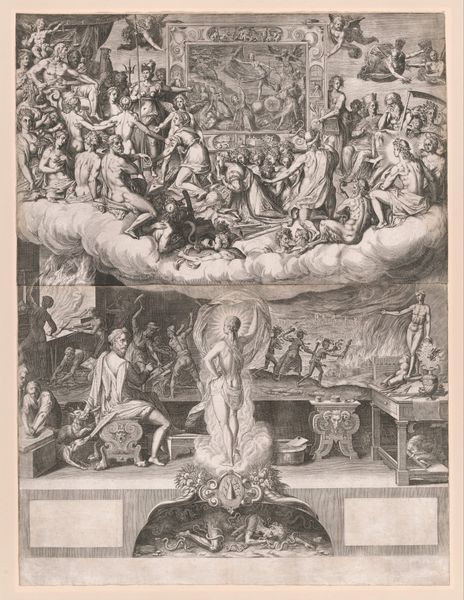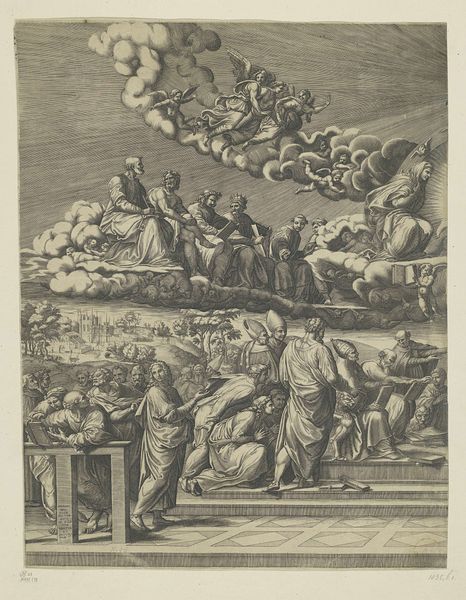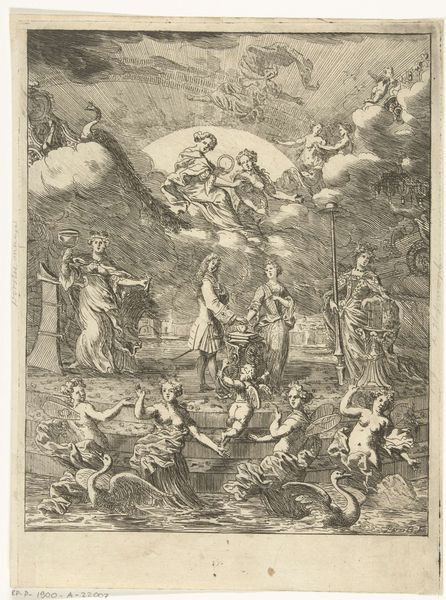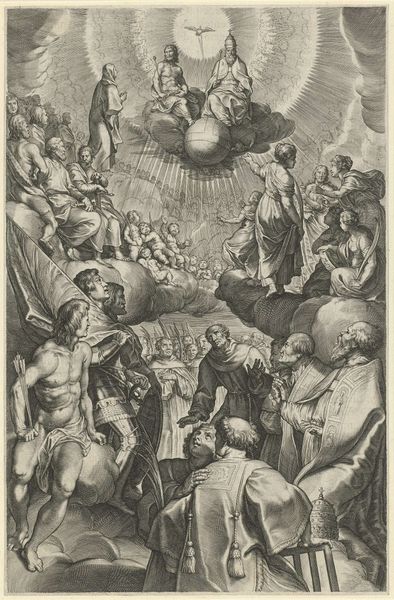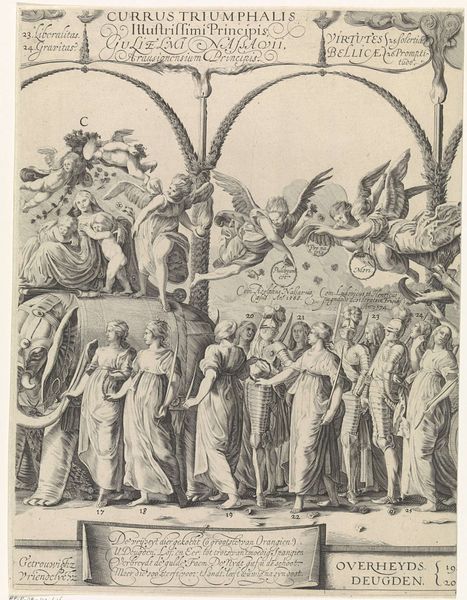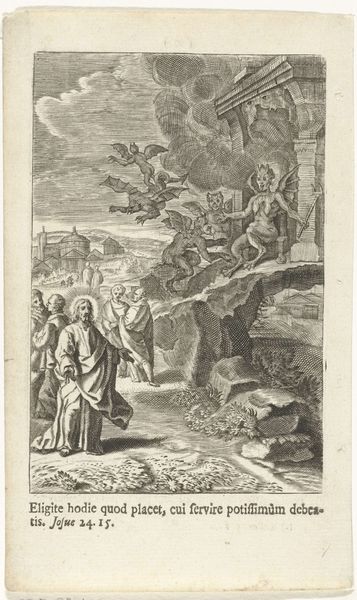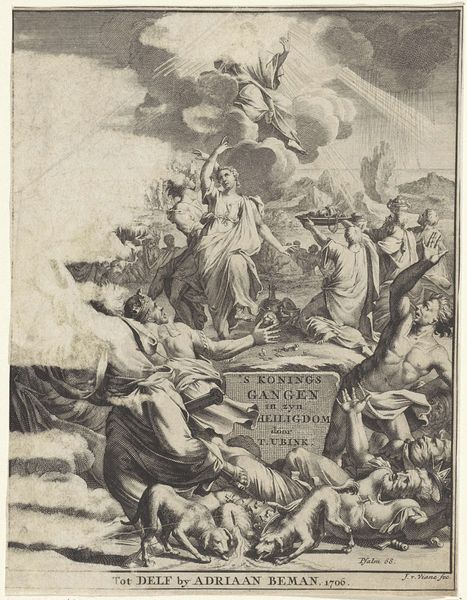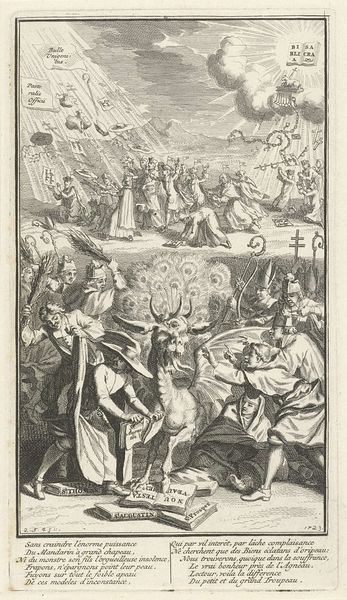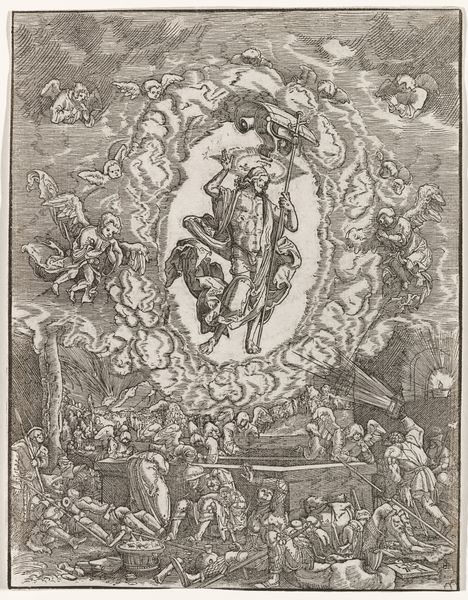
print, engraving
# print
#
old engraving style
#
mannerism
#
figuration
#
history-painting
#
engraving
Dimensions: height 519 mm, width 446 mm
Copyright: Rijks Museum: Open Domain
Curator: This is the "Dispuut over het Heilige Sacrament," the right half, created around 1552 by Giorgio Ghisi. It’s an engraving, currently held here at the Rijksmuseum. Editor: Wow. It’s... intensely detailed. Like a celestial courtroom drama playing out across different planes of reality. And a very elaborate pattern of a floor. It looks dizzying, in a way, because everything competes for attention. Curator: It is. Ghisi was a master engraver, and this piece showcases the Mannerist style prevalent at the time. Think about the reproductive function of prints; the engraving process allowed for wider dissemination of complex theological arguments and visually impressive compositions. The physical act of producing such intricate detail would have been a laborious, time-consuming endeavor. Editor: I imagine! You can almost feel the pressure he must have felt pushing that tool to recreate this scene on metal. So much concentrated energy... Is this some sort of allegory then? I am attracted by these groups of characters sitting on what looks like celestial clouds. Curator: Absolutely. The Disputation depicts theological debates around the Eucharist, staged between earthly and heavenly figures. Consider how prints facilitated not only the spread of imagery but the propagation of specific doctrines and world views tied to powerful religious factions of that moment. Editor: It makes you think about the power of images, right? Especially in times of theological upheaval, a carefully crafted piece like this could sway opinions as powerfully as any sermon. And look, that texture above! Did the engraving support new approaches in portraying the light and its nuances? I wonder about these puffy, busy clouds… they seem to overwhelm everything. Curator: The Mannerist aesthetic favored complex compositions and idealized forms. What strikes me is how Ghisi used engraving to translate painterly effects onto paper, playing with tonal gradations. Each line, each dot, serves the didactic, aesthetic function of the artwork. Editor: There is such dedication of labor that seems unreal today! To have poured weeks, months into capturing such detail—it speaks volumes about the perceived importance of both the subject and the act of making itself. I am so impressed! Curator: Precisely! These prints became valuable commodities that circulated throughout Europe, shaping beliefs. This specific print allows us to contemplate not only religious art of the time but also economic structures surrounding art making and circulation. Editor: That adds another layer to the intensity, doesn’t it? Knowing it was made with that specific purpose... Still, looking at this piece now, divorced from its original context, it strikes me as both a testament to skill and a curious window into a very different world. I appreciate having learned more about the circumstances that lead to its making.
Comments
No comments
Be the first to comment and join the conversation on the ultimate creative platform.
